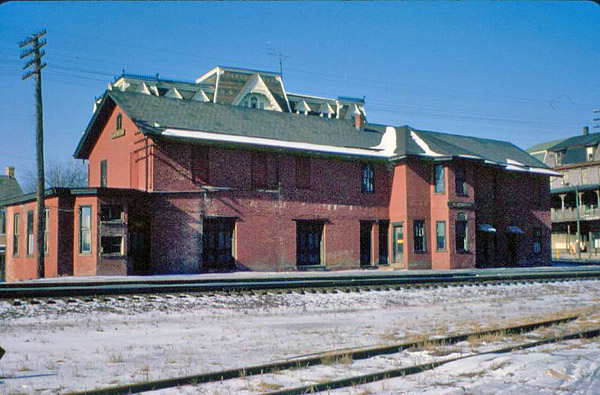The settlement that later was incorporated as the Borough of Slatington in 1864 dates back to the mid-eighteenth century when the region was on the frontier of English settlement in Pennsylvania. During the French and Indian Wars, Kern's (aka Truckers) Mill was an outpost that supplied wood for nearby forts. The settlement was on Trout Creek where it emptied into the Lehigh River, which itself flowed into the Delaware River at Easton.
In the mid-nineteenth century, the discovery of slate in the locale made for a booming town. Slatington was part of a larger slate region in Pennsylvania that ran east to Bangor and Penn Argyl and west maybe ten or so miles past Slatington and through Emerald and Slatedale. Welsh immigrants poured into the town and surrounding area to work in the quarries where slate was mined for use as roofing slates, blackboards in schools, school slates for students to write on, sidewalk pavers, household mantels, etc. Along with all of the slate quarries and accompanying slate manufacturers, numerous other businesses, factories and mills appeared: hosiery ills, silk mills, dress factories, a brewery, banks, stores, an iron foundry, et al. The borough was a real hub of activity by 1900. (See some statistics.)
But then World War 1 and the following Great Depression brought great change to Slatington. The need for slate began to diminish with the invention of other roofing materials, and the quarries, as wasteful as they were, began to close down. The town itself ceased to be a manufacturing/mining hub, and instead most of the men found work in neighboring towns and cities at industrial plants such as the New Jersey Zinc factory in Palmerton, Bethlehem Steel in Bethlehem or Mack Trucks and Western Electric in Allentown.

Slatington's downtown railroad depot was along the mainline of the Lehigh Valley Railroad on the west bank of the Lehigh River. This is how it looked in the mid-1960s. The depot would be destroyed by a train wreck in the middle of the night on 2 February 1969, and the Lehigh Valley Railroad later disappeared into Conrail in the 1970s. The Bittner House hotel, its roof just barely seen behind the depot, burned in a spectacular fire in the 1970s.
In 1964, the town celebrated its centennial and then in 1989 it was the quasquicentennial--I knew that it was a difficult word, but I had to look it up to be sure--and in 2014 it was the sesquicentennial! By the 1980s, the dress factories and hosiery mills had closed in Slatington. The slate quarries and any other manufacturing facilities in the town were long gone. The stores moved out of Slatington too (because there was no convenient parking). Mack trucks moved its operations out of Allentown; Western Electric and other industries in the Lehigh Valley closed; Bethlehem Steel went bankrupt. That meant that residents of the town had fewer options to find industrial jobs. The town's high school changed its name from Slatington High School to Northern Lehigh High School. Over the course of the twentieth century, the town had transformed from a self-contained, thriving settlement into a residential, bedroom community.